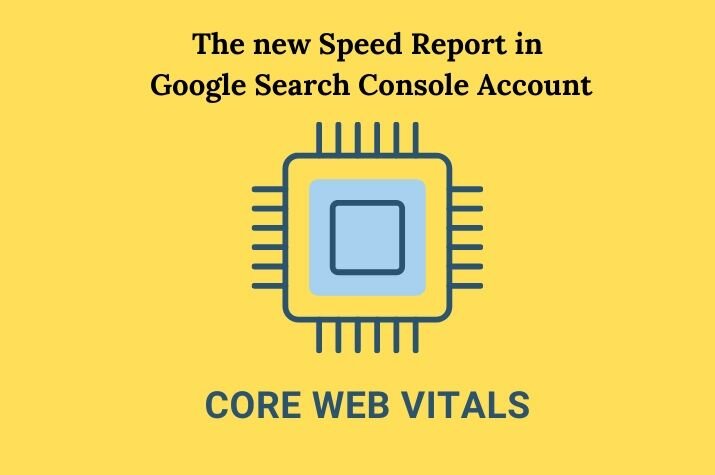If you are a blogger or online entrepreneur, I am sure you may have heard about ‘Google Search Console’ and it’s Speed (Experimental) features.
Google Search console, also known as Google Webmaster has inbuilt feature called Speed (Experimental). This feature categorized into three buckets called Fast, Moderate and Slow URL.
On 9th May 2020, Google announced, they are testing new speed metric within Google Search Console and hence, the present report is no more available for the updation.
Next, Google also stopped validating new URLs.

Core Web Vital in Google Search Console
Now, on 27th May 2020, Google officially announced the new speed report in Google Search Console.

This new report is called ‘Core Web Vitals‘ in the webmaster account. You will find this in the same position, where initially the Speed (Experimental) report was available.
The new speed report will tell you how your web pages perform based on real-world usage data.
What is Core Web Vitals?
Core Web Vitals is a new speed report available in the Google Search Console from 27.05.2020.
This new report will be based on three metrics as mentioned below.
- Large Contentful Paint(LCP): As the name suggests, it shares the time incurred to show the largest content on the given web-page. This largest content can be either Image, Video, or any large block containing text. In simple words, it shows the time taken to load the largest part of the given web page.
- First Input Delay (FID): This shows the time taken when a user interacts with the web-page. This interaction can be in the form of click on the given link or button as well.
- Cumulative layout Shift (CLS): It is an important factor to measure visual stability. In simple words, it checks the un-expected change in the layout of the web page that changes in the layout without any action by the user.
How to read the Core Web Vital Report?
Based on above given three metrics (ie, LCP, FID and CLS), the new report will categorize the URLs on your website or blog into three categories, as mentioned below.
- Poor URLs
- URLs Need Improvements
- Good URLs
Of course, these categorization are available for both Mobile and Desktop seprately.
Now, like other reports (within in the Google Search Console) click on the option for more details.
Every category will include a group of URLs of similar nature and the reason for this categorization.

I know, many of you now wondering, how to resolve this problem?
According to Google the most common page fixes should include;
- Considering using AMP on your site
- Reduce the web page size to below 300 kb
- Limit the numbers of page resources to 40 or less
In simple words, try to improve the loading speed of your website and its user experience.
Next, as per Google, this new report Core Web Vital along with previous updated UX signals is now one of the ranking factors in Google search engine.

In simple words, Google is now officially considering the ‘Page Experience‘ as a new ranking signal or factor.
Over to You
Now, if you want to rank higher in the search, you need to focus on this Core Web Vitals report. This data in this report will have direct impact on the ranking of your content.
At last, if you have not checked this report yet than I suggest to login to your Google Search Console account now and take necessary actions (if required).

Thanks for emphasizing the importance of PageSpeed in not just UX, but also in how much traffic you can get from Google. Based on our own customers’ data, we have seen drastic increases in traffic not just from Google, but from social media too. It seems PageSpeed helps your rank everywhere! When new clients switch to RebelMouse, it is fun to see how getting 90+ PageSpeed scores impacts traffic and conversion immediately.
Keep writing about performance. People need to know how important it is to a successful website!